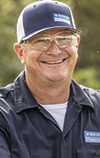Fall-born calves often offer a distinct price advantage and typically go to market with higher body condition scores. Yet, according to the USDA’s July 2021 cattle inventory, only about one-third of U.S. calves hit the ground in fall months. If your operation is considering making the move to fall calving, you’re bound to reap the financial benefits but be faced with several cold-weather nutrition, herd health and fence management challenges.
As you prepare for a switch to fall calving, consider these tips from Bekaert Fence Pro team member Van Medley, who manages his own herd of cows in Tennessee.
Prepare fences for ample access to feed and pressure from boss cows
“As you draw out your fence and gate system for fall calving, one of the most important things you can do is to ensure your forage is readily accessible and that you have a separate area with dry space for calves,” says Medley. “Lactating cows require more nutrients in the winter, so whether you can graze a late-season paddock or you’re putting out hay in a ring or feeder, ensure the fences in those areas are ready.”
When calves and cows are together, there’s often a “boss cow” that likes to throw its weight around at the feeder or push cows or calves around a bit. “You want your fence ready to take that kind of pressure,” says Medley. “I recommend using woven wire fencing with 6-inch vertical openings. It will be sturdy while keeping the holes small to avoid injuries for baby calves.”
Protecting herd health with fence design
If your herd struggles with respiratory or other common cold-weather issues, it’s important to design your shelter and fences to allow for easy sorting and hospital pen areas.
“If you can have calving take place in a separate area, work newborns, and then bring your pairs into the rest of the herd, that’s always ideal,” says Medley. “Having a fenced walkway from that area to the herd barn is worth its weight in gold,” he adds.
Medley also advises producers to think about predator pressure when designing calving areas. “We always think about building a cattle fence to keep cows and calves in during calving season, but we also want to ensure we’ll keep predators like coyotes, wolves or in some areas, bears, out of our pens,” said Medley. “In this case, an additional exterior exclusion fence is a great investment.”
Get fence maintenance checked off the list early
When the weather turns cold and you have baby calves on the ground, the last thing you need is to find a newborn tangled up in a damaged piece of fence.
“Pre-calving season is the ideal time to check for broken wires, rusty spots or holes in your fence,” says Medley. He admits profit margins have been slim in the cattle industry of late, so building a brand-new fence may be out of the question, but fixing broken wires or remediating sagging fences can save time and headaches as calves start to drop.
“Our Bekaert team urges producers to be especially careful in those areas where cows or calves congregate or lounge. Sagging wires can give way if too much pressure is applied,” Medley notes.
If your birthing or cow-calf area is a high-pressure, high-density situation, protect your fence integrity by shortening post spacing to 12 to 16 feet. “Your perimeter fence may have posts spaced 20-feet apart, but in those high traffic areas, we recommend shortening your spacing to allow for any pushing or crowding that may occur.”
Whether you’re going to stick with spring calving or make the move to fall calving, your fences are a critical component to operational success.









